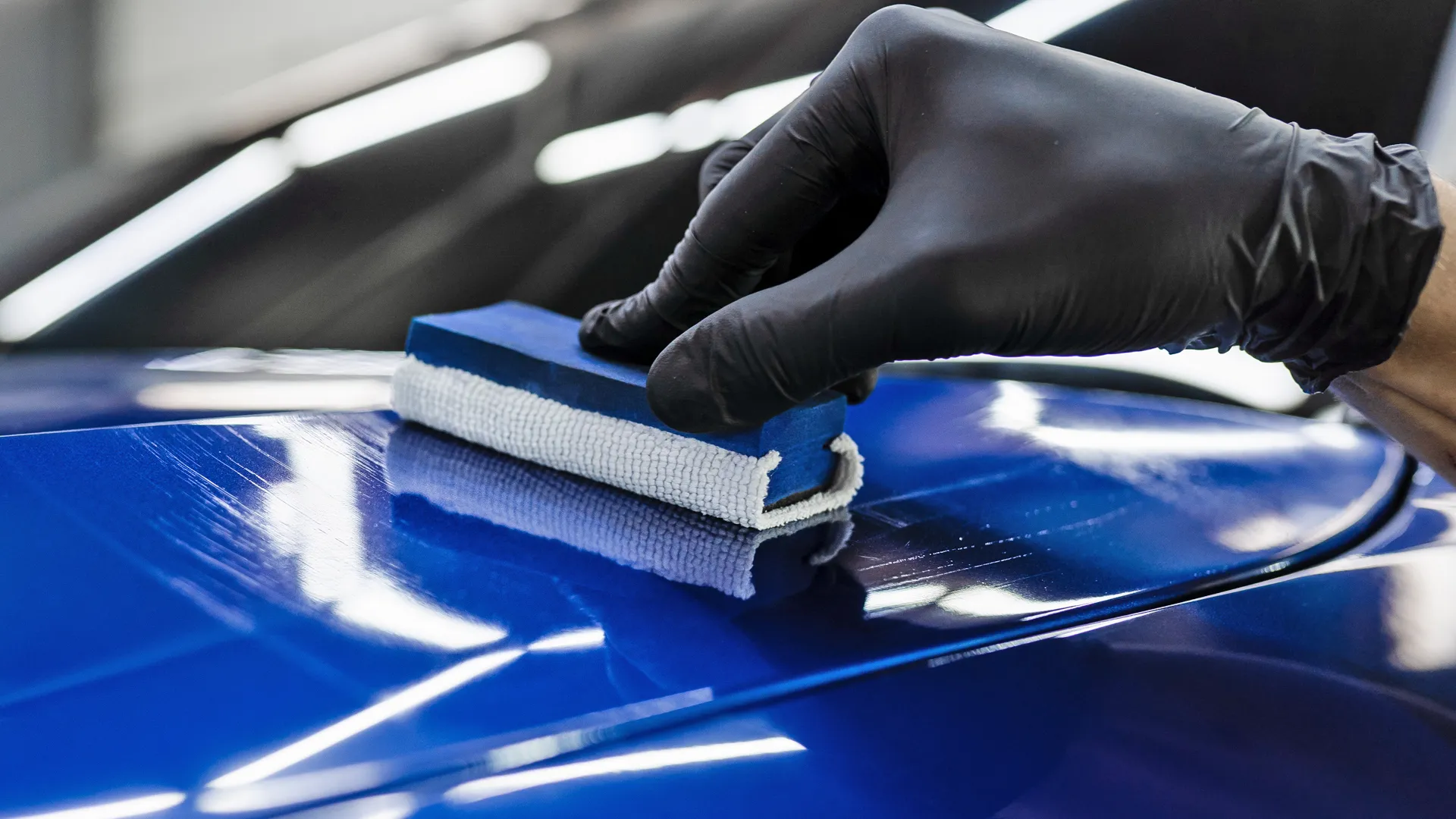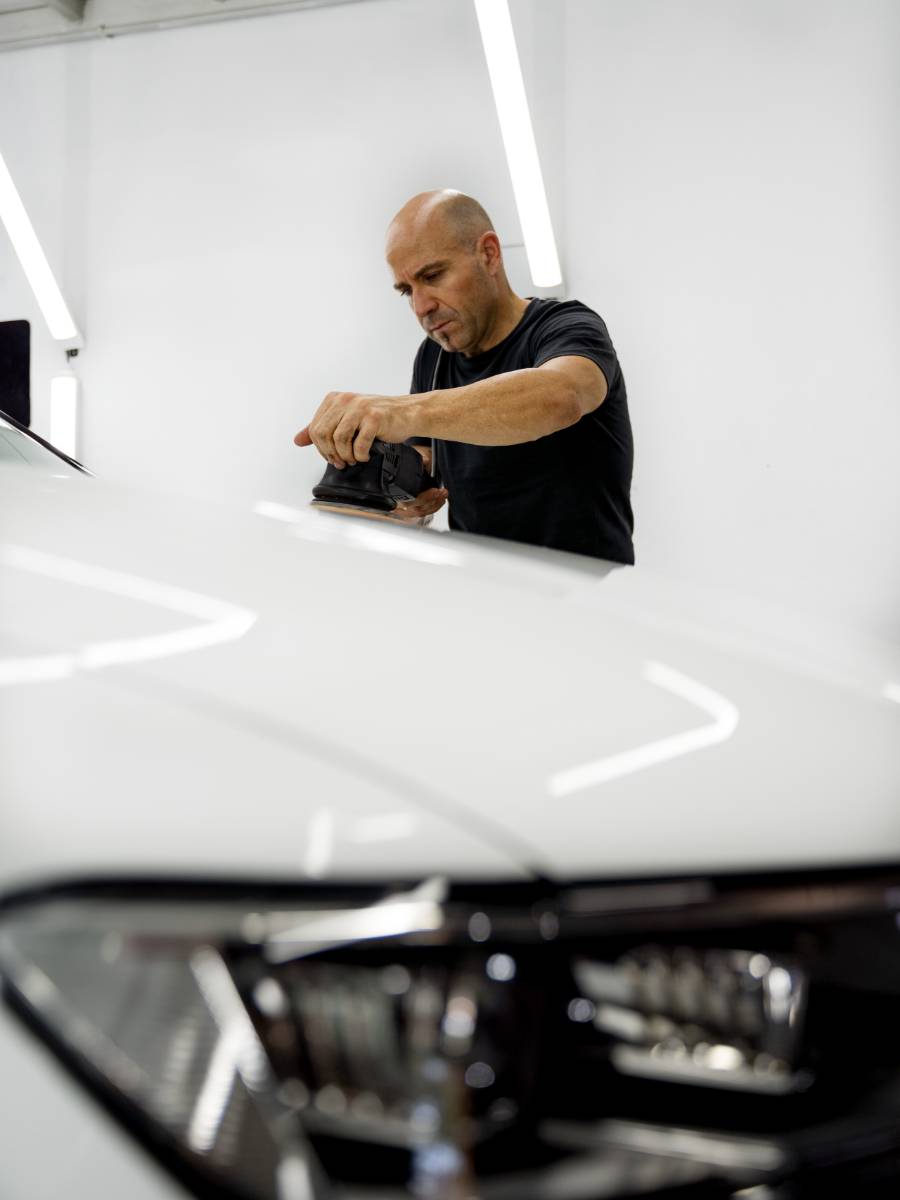How Ceramic Coating Enhances Your Vehicle's Protection and Appearance
How Ceramic Coating Enhances Your Vehicle's Protection and Appearance
Blog Article
Ceramic Finish vs. Standard Wax: Which Gives Better Long-Term Security?
The argument between ceramic finishings and conventional wax for car protection has amassed significant attention amongst vehicle lovers and experts alike. While both serve the purpose of safeguarding paint, their differences in durability, application, and long-lasting maintenance expenses may affect a customer's option. Ceramic coatings boast remarkable long life and resistance to ecological variables, yet the intricacy of their application increases inquiries regarding access and functionality. As we explore these contrasting choices, it becomes important to take into consideration not just the prompt advantages yet also the implications for car care in time.
Introduction of Ceramic Coating
Ceramic covering has gained considerable popularity among automobile fanatics and detailers alike due to its advanced protective high qualities. This innovative technology is developed to develop a resilient, hydrophobic guard over a vehicle's paint surface, significantly improving its resistance to environmental impurities such as dust, UV rays, and chemical discolorations. Unlike typical wax, which supplies a short-lived layer of security, ceramic coatings bond at a molecular level with the paint, using lasting toughness-- often expanding past two years with appropriate upkeep.
The application process includes precise preparation of the automobile's surface area, including cleaning and brightening to ensure optimum adhesion. As soon as used, the layer treatments to form a robust layer that not only adds deepness and gloss to the paint yet also simplifies maintenance. With its hydrophobic residential properties, ceramic finishing enables water and dirt to move off more quickly, minimizing the frequency of cleans and reducing the danger of swirl marks.
Additionally, ceramic coverings are readily available in various formulations, permitting customers to pick products customized to their details needs and preferences. In general, ceramic coating represents a considerable innovation in paint security technology, supplying remarkable efficiency compared to traditional choices.
Summary of Standard Wax
Generally concerned as a staple in automobile treatment, wax offers as a prominent choice for those seeking a simple technique to enhance and secure their lorry's paint - ceramic coating. Automotive wax generally comprises all-natural active ingredients, such as carnauba, or artificial substances, designed to produce a safety layer externally of the paint. This layer not only boosts the lorry's gloss and beam but additionally gives a barrier versus ecological impurities
The application of wax is usually easy to use, making it easily accessible for both specialists and DIY enthusiasts. It can be applied by hand or equipment, permitting adaptability in the describing procedure. When applied, wax needs a curing duration, after which it hardens to develop a safety shell. Wax is likewise known for its capability to repel water, advertising a beading impact that aids in the avoidance of water places and corrosion.
Nonetheless, while wax is efficient for boosting the visual appeal of a car, it is essential to note that the security it uses may require a lot more constant reapplication compared to different products, such as ceramic layers. On the whole, conventional wax continues to be a preferred alternative for those prioritizing simplicity of use and prompt aesthetic enhancement.
Resilience and Long Life Contrast
While both ceramic finishes and typical wax offer protective advantages for automobile paint, their durability and longevity differ significantly. Traditional wax, typically made from all-natural carnauba or synthetic polymers, normally offers a safety layer that lasts about 3 to six months. This fairly short life-span necessitates normal reapplication to keep optimum security.
On the other hand, ceramic coverings are engineered from sophisticated nanotechnology, forming a covalent bond with the paint surface. This leads to a durable, hydrophobic layer that can endure for two to 5 years, depending on the product and ecological conditions. The premium resilience of ceramic layers is credited to their chemical framework, which offers boosted resistance to scratches, UV rays, and oxidation.

Protection Against Environmental Aspects
Shielding an automobile's paint from ecological aspects is essential for keeping its appearance and value in time. Automobiles are continuously exposed to a selection of elements, including UV rays, bird droppings, tree sap, acid rain, and roadway grime, every one of which can jeopardize the integrity of the paintwork.
Ceramic finishes provide a robust protection against these ecological assailants. Unlike conventional wax, which can weaken promptly under UV exposure, ceramic coatings create a long lasting, hydrophobic layer that resists the damaging impacts of sunshine and ecological contaminants. This sophisticated technology produces a chemical bond with the lorry's surface area, providing superior security that lasts for many years, also in severe problems.
Conventional wax, while simpler to use, generally needs constant reapplication and supplies limited resistance to pollutants and UV rays. In time, it can break down, leaving the paint vulnerable to scratches and oxidation. On the other hand, ceramic coverings preserve their safety high qualities much longer, substantially minimizing the threat of paint damage and making sure that the lorry preserves its aesthetic allure. Therefore, ceramic layers are progressively identified as the premium choice for long-lasting defense versus environmental elements.
Application and Maintenance Distinctions
The approaches of application and subsequent upkeep for ceramic coverings and typical wax differ substantially, look at these guys impacting the overall individual experience and effectiveness of each product. Ceramic layers call for an even more detailed application procedure, commonly involving surface prep work that includes cleaning, sanitizing, and polishing the vehicle. When the surface area is ready, the ceramic layer is applied in a controlled environment, often needing expert competence to guarantee correct healing and bonding to the paint.

While both products enhance automobile look, the longer-lasting protection provided by ceramic coverings may justify their initial investment, despite the more demanding application procedure. Alternatively, traditional wax stays a prominent selection for those looking for a simpler, albeit short-term, service.

Final Thought
In conclusion, ceramic finishings show considerable benefits over typical wax in terms of longevity and environmental management. With a lifespan prolonging 2 to five years and superior resistance to UV rays, dirt, and chemical stains, ceramic coverings use a more reliable service for long-lasting vehicle maintenance. The application see page procedure might need professional know-how, the resulting expense savings and reduced frequency of reapplication highlight the worth of ceramic coatings for those seeking optimum lorry security.
The debate in between ceramic finishings and traditional wax for car defense has amassed significant focus amongst automotive lovers and professionals alike. Unlike standard wax, which provides a momentary layer of security, ceramic finishings bond at a molecular level with the paint, offering lasting sturdiness-- usually expanding beyond two years with appropriate upkeep.
While both ceramic finishes and standard wax deal safety advantages for vehicle paint, their longevity and longevity vary substantially. For car fanatics looking for lasting security, ceramic finishings present an engaging benefit over conventional wax items.
In verdict, ceramic coatings demonstrate great post to read considerable advantages over traditional wax in terms of longevity and ecological defense.
Report this page